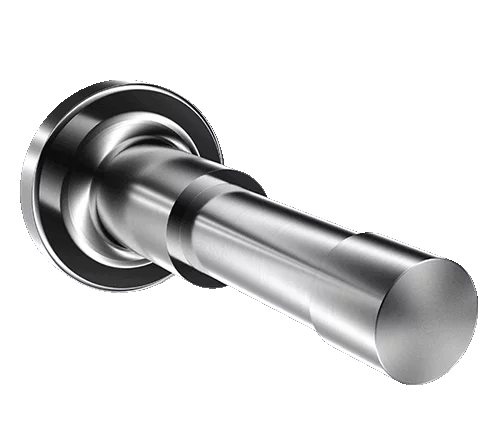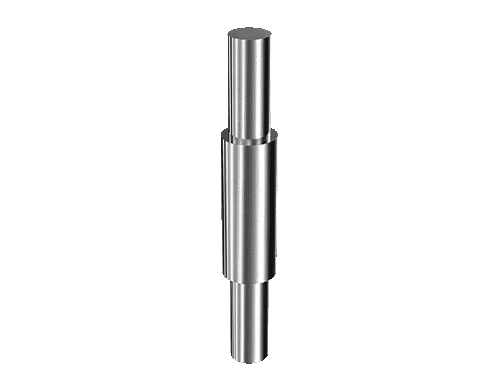Shandong Qilu lndustrial Co.,Ltd.
Understanding the Heat Treatment Process for Forged Shaft Durability
Introduction

Forged shafts are crucial components in various industries, ranging from automotive to aerospace. Their durability and reliability are paramount for the performance and safety of machinery and equipment. One key factor that significantly influences the durability of forged shafts is the heat treatment process they undergo. In this blog post, we’ll delve into the intricacies of the heat treatment process for forged shafts, exploring its importance, methods, and outcomes.
Importance of Heat Treatment for Forged Shafts
Heat treatment stands as a pivotal step in the production of forged shafts, significantly influencing their mechanical attributes. By subjecting the shafts to precise heating and cooling regimes, the material undergoes intricate metallurgical alterations, fortifying its strength, hardness, and toughness. This meticulous process ensures that forged the shafts exhibit superior performance characteristics, enabling them to endure the demanding conditions encountered in diverse industrial settings. Ultimately, heat treatment plays an indispensable role in enhancing the durability, reliability, and overall quality of forged the shafts, thereby underscoring its paramount importance in the manufacturing process.
Heat Treatment Methods for Forged Shafts
There are several heat treatment methods commonly employed for forged shafts, including:
- Normalizing: Normalizing involves heating the shaft to a temperature above its transformation range and then air cooling it. This process refines the grain structure, relieves internal stresses, and improves mechanical properties such as strength and machinability. By promoting a uniform microstructure throughout the shaft, normalizing enhances its resistance to deformation and ensures consistent performance in demanding environments.
- Quenching and Tempering: Quenching rapidly cools the heated shaft in a quenching medium to achieve high hardness, followed by tempering to improve toughness and reduce brittleness. This dual-stage process balances hardness with ductility, enhancing the shaft’s performance under demanding conditions. Quenching creates a hardened surface layer, while tempering imparts flexibility to the core, providing an optimal combination of strength and toughness for withstanding dynamic loads and impacts.
- Annealing: Annealing softens the shaft by heating it to a specific temperature and slowly cooling it. This relieves internal stresses, refines the microstructure, and improves machinability, making the shaft more ductile and easier to work with. By eliminating residual stresses and irregularities, annealing enhances the dimensional stability of the shaft, ensuring precise alignment and fit during assembly and operation.
Understanding the Heat Treatment Process

The heat treatment process for forged shafts typically involves the following steps:
| Step | Description |
|---|---|
| Heating | The forged the shaft is uniformly heated to a specific temperature based on the desired properties and the material composition. |
| Soaking | Once the desired temperature is reached, the shaft is soaked at that temperature for a predetermined period to ensure uniformity of the heat throughout the material. |
| Quenching | After soaking, the shaft is rapidly cooled by immersing it in a quenching medium to achieve the desired hardness. |
| Tempering | The quenched shaft is then tempered by reheating it to a lower temperature, followed by controlled cooling. This step enhances the shaft’s toughness and ductility. |
Conclusion
In conclusion, the heat treatment process plays a crucial role in enhancing the durability and performance of forged shafts. By carefully selecting and implementing appropriate heat treatment methods, manufacturers can ensure that forged the shafts meet the demanding requirements of various industrial applications. Understanding the complexities of the heat treatment process is essential for optimizing the properties of forged shafts and maximizing their service life.
FAQ
Q: How does heat treatment improve the durability of forged shafts?
A: Heat treatment modifies the microstructure of the material, resulting in improved mechanical properties such as hardness, strength, and toughness, which are essential for durability.
Q: Are there any risks associated with heat treatment?
A: Improper heat treatment can lead to issues such as distortion, cracking, or inadequate mechanical properties. It’s crucial to follow proper procedures and guidelines to mitigate these risks.
Q: Can all types of forged shafts undergo the same heat treatment process?
A: The heat treatment process may vary depending on factors such as the material composition, desired properties, and end-use requirements. Different types of forged shafts may require tailored heat treatment approaches.
Q: How can one determine the appropriate heat treatment parameters for forged shafts?
A: The selection of heat treatment parameters (e.g., temperature, time, cooling rate) is based on factors such as material composition, desired properties, and the specific application of the forged shaft. Conducting thorough metallurgical analysis and testing is essential for determining the optimal parameters.
